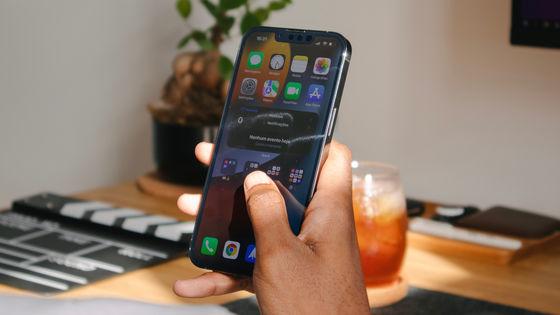Apple, "If you replace the screen o...
03
02
Apple, "If you replace the screen of iPhone 13 with a third party, you can't operate Face ID operation" by updating the software and promised
The iPhone 13 Series released in September this year has been found that the face authentication Face ID will not work if the display is replaced with a third party.The repair company, which published the disassembly report, had found a mechanism to restrict exchanges by unofficial repair companies.
Apple, on the other hand, has announced that it will abolish repair restrictions by software update at a later date.

Repair restrictions in the iPhone 13 series are linked to small control chips and display parts.When replacing it with a new screen, the Face ID can be functioned by synchronizing the serial number of the iPhone and the display through the software and server that Apple recognized only for certified companies.In the case of third -party display parts, there is no control chip, so the iPhone itself and Face ID cannot be synchronized.
For the time being, there is no way to "transplant the soldered chips from the original screen to a new screen".However, for that, special tools and skills such as microscopes are required (see the video below), and repairs that have been repaired by hand (not certified services) have lost the large source of display exchange, worst.You may be forced to go out of business.Naturally, as the mechanism to restrict repair became clear, there were voices criticizing Apple.
In response to such reactions, Apple told THE VERGE that it is planning to develop a software update that "there is no need to transfer the micro controller to maintain the operation of the Face ID after the screen is replaced."
The restriction on repair in the iPhone 13 series was discovered just in July this year, indicating that President Biden would support the right to repair, and in October the US Copyright Bureau was eligible for repairs.Immediately after the recommendation (relieving the ban on the protection mechanism by the manufacturer and making it easier to repair).Apple may have wanted to avoid repairs due to new repairs and accelerate the "right to repair" movement.
Source: The Verge
あなたのプライバシー設定では、このコンテンツをご利用できません。こちらで設定を変更してくださいあなたのプライバシー設定では、このコンテンツをご利用できません。こちらで設定を変更してくださいあなたのプライバシー設定では、このコンテンツをご利用できません。こちらで設定を変更してくださいあなたのプライバシー設定では、このコンテンツをご利用できません。こちらで設定を変更してください

![[Kill personally developed games] Top class in app history! Too beautiful water puzzle "a [Q] ua" | Famitsu App for smartphone game information [Kill personally developed games] Top class in app history! Too beautiful water puzzle "a [Q] ua" | Famitsu App for smartphone game information](https://website-google-hk.oss-cn-hongkong.aliyuncs.com/drawing/article_results_7/2022/3/3/66755df992ff2d2b1e1ab43844ef9f88_0.jpeg)





![[Latest in 2021] 10 recommended seat covers for cars!If you want to improve the texture and functionality of the car, choose the mounting type and material. [Latest in 2021] 10 recommended seat covers for cars!If you want to improve the texture and functionality of the car, choose the mounting type and material.](https://website-google-hk.oss-cn-hongkong.aliyuncs.com/drawing/article_results_7/2022/3/3/e5b44589e77141f3a633189165fb6f60_0.jpeg)